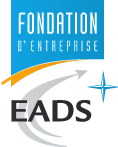|
|

|
|||||
Phase Field Higher Order Active Contours for Object Modelling and Segmentation from Imagery
Summary of the research project:
Thematic title of the project: "Modelling and Segmentation of Complex Shapes from Imagery using Phase Field Higher Order Active Contours".This project addresses the automatic segmentation of objects from images, in particular infrared images. Such problems are hard because objects can almost never be distinguished from the background using the image data alone; rather, prior knowledge of the object's shape is needed. While many segmentation methods include shape information, almost all require a template shape; they use costly pose estimation procedures; and they are incapable of detecting more than one instance of an object in an image. These attributes are inappropriate when the identity, and hence the precise shape, of the object is unknown, and where multiple instances may be present. New techniques are therefore required. To address the above problem, we will use the `higher-order active contour' (HOAC) framework, which allows the inclusion of shape information in a way that avoids the above limitations. Until now this method has only been used to model simple shapes, e.g. circles. The main methodological challenge is thus to develop a way to model complex shapes within this framework, without losing its advantages. Two approaches will be taken to the modelling of complex shapes (`modelling' means that the shape is a low-energy local minimum of the defining contour energy). The first, which is a continuation of previous work on the stability of simple shapes, treats complex shapes as perturbations of simpler shapes. Taylor expansions of the energy functional around the simpler shape are then used to search for new local minima as a function of the model parameters and interactions. The results can be verified using numerical computations. The second approach uses an equivalence between (higher-order) active contours, phase field models, and Markov random fields, to estimate model parameters from examples of the shapes to be modelled, using Bayesian parameter and model estimation techniques. Verification that the resulting model has an appropriate local minimum is a posteriori in this case, but it seems likely that models for more complex shapes can be found this way, and that the process can be automated. Based on this modelling framework, models for particular classes of shapes will be developed, and then applied to the segmentation of objects from imagery, in particular from infrared imagery, as detailed in the contract for the EADS Foundation project of which this research project will form a part.
Keywords: Object segmentation from imagery, Shape modelling, Higher Order Active Contours (HOACs), Phase fields HOACs, Model and parameter estimation, Bayesian Estimation, Markov Random Fields
Research team:
- Josiane Zerubia (INRIA Research Director and Head of ARIANA Research Group, INRIA)
- Ian Jermyn (formerly Senior Researcher in ARIANA and now Reader in the Department of Mathematical Sciences, Durham University )
- Ikhlef Bechar (Postdoc (since April 2011) in ARIANA Research Group, INRIA )
- Gregoire Kerr (Master intern (2010) in ARIANA Research Group, INRIA )
Sponsorship:
This research project is funded by:
The EADS Foundation for Sponsorship and Support for Science and Research
( Technical correspondent at Astrium : Marie Rochery )
|
Last modified date: May 2011 |